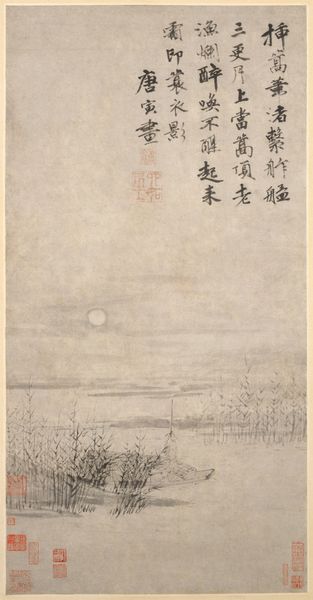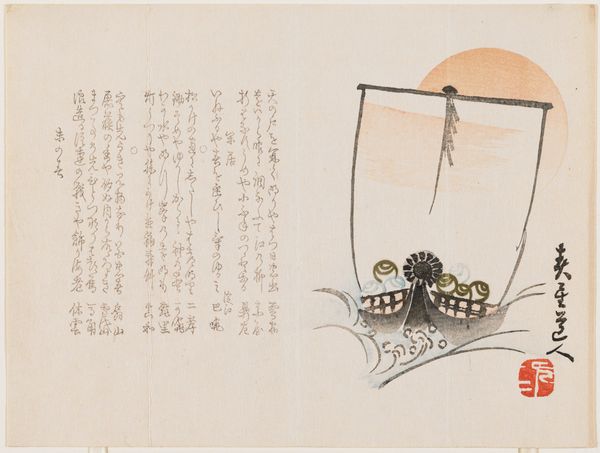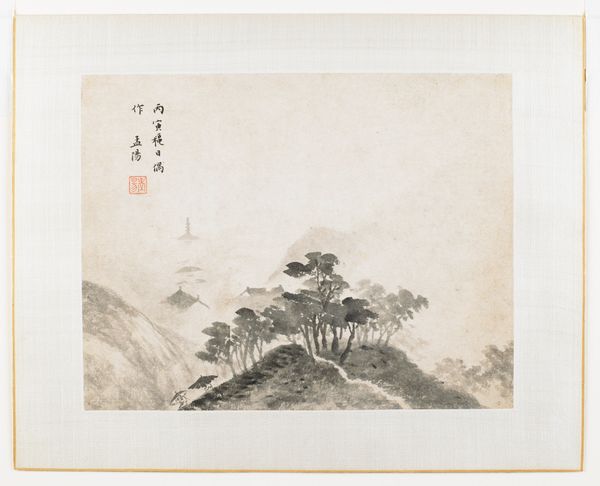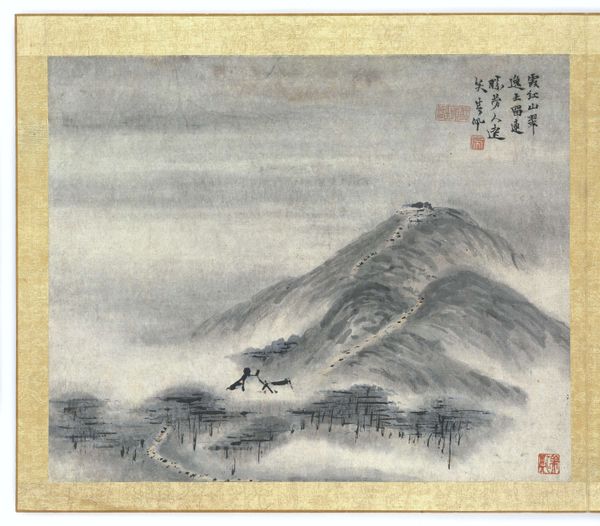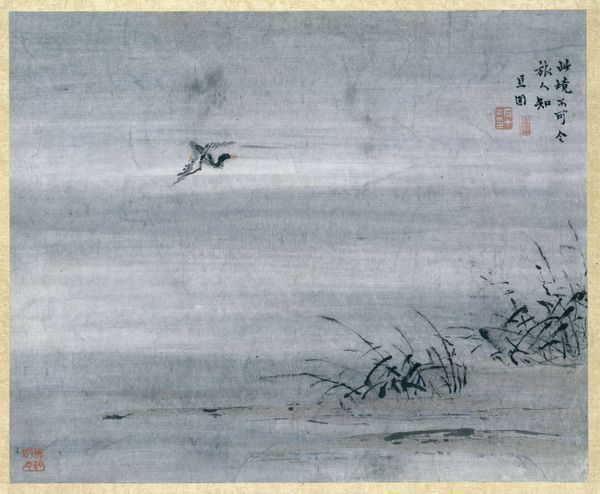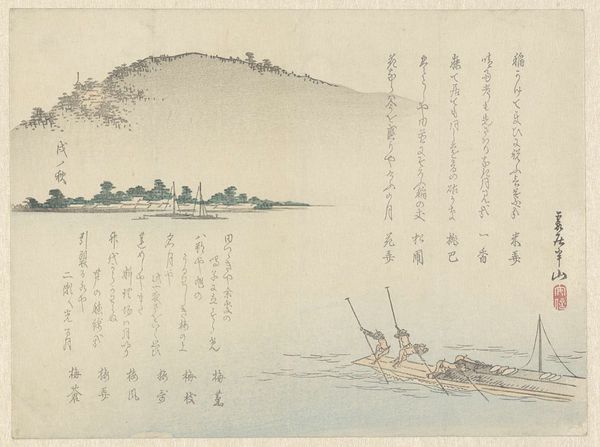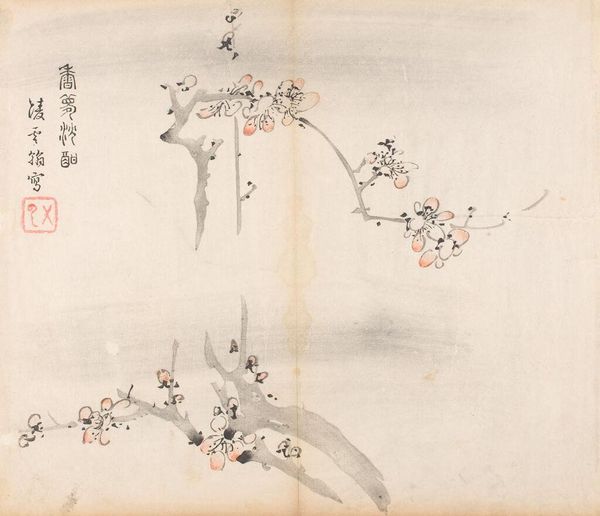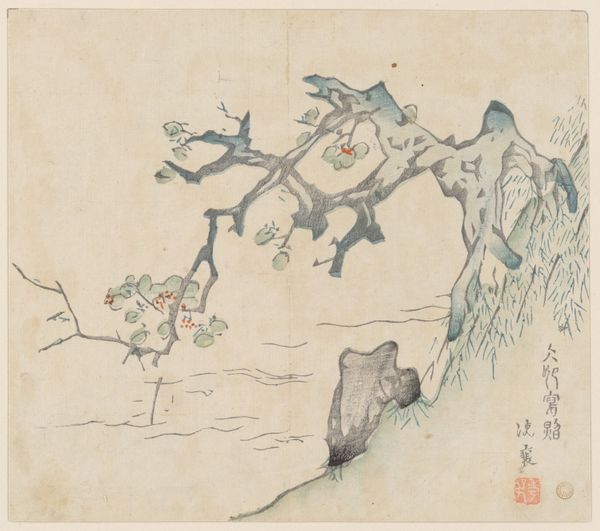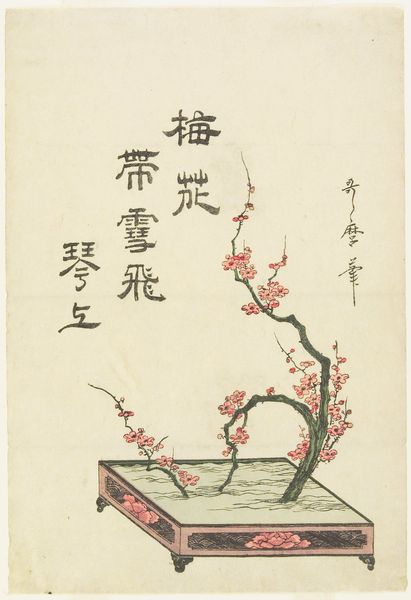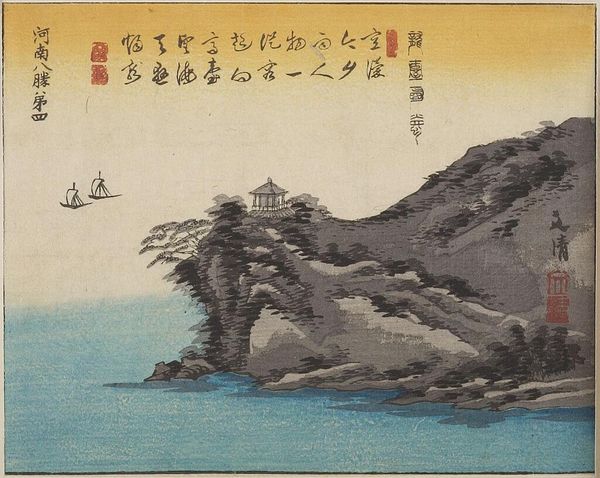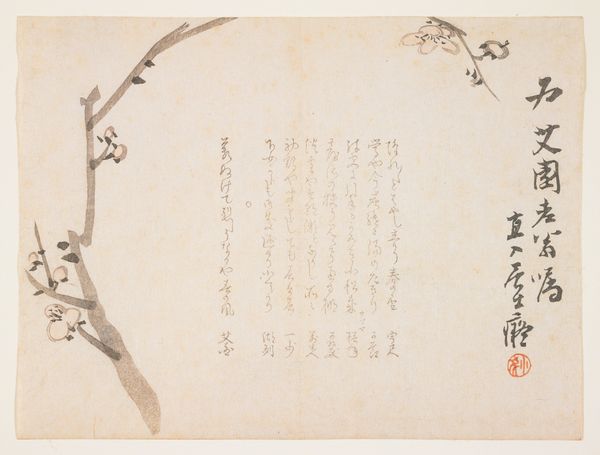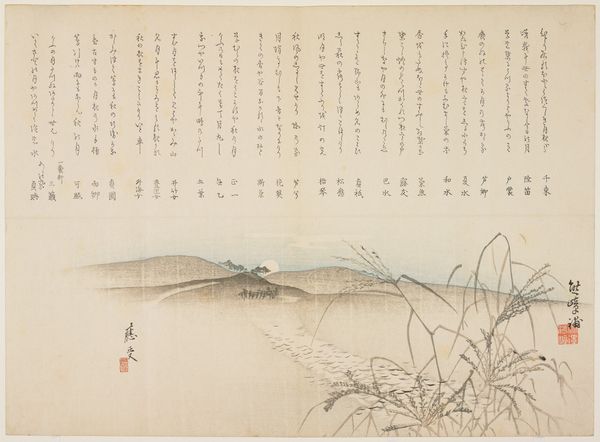
painting, paper, ink
#
water colours
#
painting
#
asian-art
#
landscape
#
paper
#
ink
#
orientalism
#
abstraction
#
line
#
modernism
#
miniature
#
watercolor
Dimensions: height 27.2 cm, width 33.2 cm
Copyright: Rijks Museum: Open Domain
Curator: So, let's delve into this intriguing piece titled "Schildering," created sometime between 1700 and 1750, attributed to Gao Qipei. It's crafted with ink and watercolours on paper, showcasing a landscape. Editor: Wow, there's something ethereal about it. It’s making me think of dreams. The soft washes, the floating ship... it feels very symbolic and invites contemplation, don’t you think? Curator: Indeed. Qipei was known for his individualistic style. The context here points to the literati painting tradition where artists used landscapes to explore philosophical and personal ideas, specifically of transcending boundaries between tangible and abstract realms. We might consider how ideas of ‘Orientalism’ have shaped the understanding of landscapes like these? Editor: Absolutely. I like your point on the symbolic. The artist doesn’t want to give us an illustration. More like they hint at feelings with nature as a way to express something intensely internal and intimate. Almost like seeing a reflection of your own emotions. Curator: And reflections on the socio-political sphere, too. This was a time when the literati class sought solace from political turmoil by expressing inner emotions. So the work can be seen as an artistic statement with implications beyond aesthetics. We can analyse how different materials interplay – ink, watercolours and the very paper – as integral actors within historical, theoretical frameworks. Editor: Okay, so you’re putting a bit more weight on historical background than the personal, emotional response I am having. That’s a good way of contextualizing the image for people who maybe can’t see past labels. Curator: Yes, examining cultural context opens discussions about power, identity, and representation and even connects it to discourses within feminist art theory or postcolonial studies. Editor: I appreciate having learned about it more! I still feel drawn to how this miniature world mirrors vast internal feelings, though. Curator: Agreed! Bringing personal perspectives, like yours, to art enriches our understanding!
Comments
No comments
Be the first to comment and join the conversation on the ultimate creative platform.
